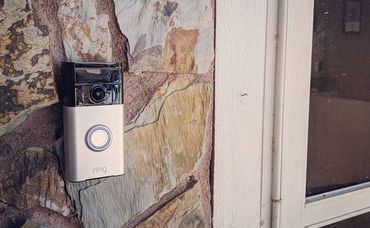Washington D.C. is filled with beautiful old houses that stretch back to the 18th Century and beyond.
From the gorgeous brick Victorians in the Capitol Hill Historic District to the townhouses of Georgetown, this abundance of high quality, old fashioned historic buildings has helped contribute to a 2% annual rise in median home sales, per The Washington Post. There’s a period home for all tastes no matter your preference.
While these old houses can be quaint and pretty, they admittedly come with some shortcomings. Namely lacking in modern facilities and amenities, oftentimes it might be necessary to do a home renovation in order to allow it to maximize its comfort level and reach its full potential.
By working with a premier local realtor and incorporating cutting-edge “Internet of Things” technologies into your old-fashioned home, you can easily gain the best of both worlds and ensure your renovations don’t damage sale prices. In fact, you can even potentially boost prices. Recent studies have shown that installing smart features can transform the sale potential of a property and boost the value by up to 5%. Here are 3 tips on how you can modernize your old home.
Get permission first
Depending on your exact location, it’s very possible that you might not be able to simply install whatever kit you like in your property – even if you own it. Some of the older districts in D.C. are protected under various heritage laws which limit alterations on windows and walls. So even if you find some good value-for-money music studio equipment, for example, getting the requisite cables, speakers and sound insulation embedded into the ceiling or walls may be a tough task. Usually, you’ll be made aware of any restrictions when you first move in – but it may also be worth checking with the National Register of Historic Places before knocking down any walls.
Keep in character
Modern technology – including smart technology – comes in all shapes and sizes, and you ought to use this to your advantage. If your older property has beautiful period interiors, for example, it may be wise to opt for the sleekest and least conspicuous versions of IoT technology (such as tablet-controlled smart thermostats, rather than wall-mounted boxes) so that your tech doesn’t stand out for the wrong reasons. When it comes to size, meanwhile, smaller is often better if you’re pairing old and new: if you’re thinking about installing an Amazon Alexa, for example, why not consider the Echo Dot rather than the Echo in order to avoid a mismatch with the wider period interior?
Don’t go overboard
Period properties are enjoyable within the context of their historic nature. As a result, adding too much technology can not only cause aesthetic problems; it can also defeat the purpose of living there. Substantial tech renovations like installing smart lighting systems may require the removal of the property’s traditional light fittings. This can put the property at risk of declining in value if you plan to sell it eventually. If you’re finding yourself resentful that the character of your property is preventing you from enjoying the technology you want, then it may well be time to consider moving to a more modern home so that you can gain the items you want.
Living in an old property has lots of advantages. In a desirable area like Washington D.C., the historic charm of a period property fits perfectly with the city’s heritage. But the downsides are numerous, too. One of the worst potential pitfalls is the way that it prevents full engagement and integration with modern technologies. These tips, however, should help get you on your way to striking the right balance between history and the future before you decide to cash in on your home.
Guest blog post written by Chrissy Jones. Featured image is of 3207 Scott Place in Georgetown.




